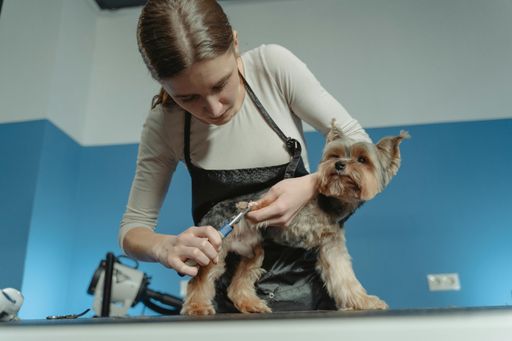There are lots of reasons you might be moving abroad, but no matter what your motivation for moving is, this is certainly a very exciting time in your life!
That said, it’s not as simple as packing a bag and hopping on a plane like you would if you were going on holiday. There are lots of things you need to think about and sort out first.
For one thing, you need to decide where you’re going to live and work when you get there; then, of course, you need to think about what you’re going to do with your current home, your belongings and one other very important thing - your pet.
Moving abroad with a pet is entirely possible, but this doesn’t always mean it’s going to be a simple and stress-free process. As such, it’s best to get as prepared as you possibly can beforehand. This will make the journey much easier for you both.
To help you do this, we’ve created this guide on how to move abroad with your pet. Read on to find out more.
Speak to your vet
There are several reasons that you will need to book your pet in with the vet before you move. Firstly, they will be able to conduct a full check-up on your furry friend and make sure they are happy, healthy and able to travel. The last thing you need is complications or for your pet to become unwell along the way.
Not only this, but different countries have different laws for bringing pets across the border and often, they are required to have passed certain medical checks first, including having an up-to-date rabies vaccination. You may also be required to get a certificate of health from the vet.
So remember, you will need to check all entry requirements for your chosen country to make sure you are ticking all the right boxes. And be sure to do this in plenty of time so you can get all the correct paperwork in order. Leave it too late, and things might get stressful as you head towards moving day.
Finally, the vet will also be able to offer you advice on how to make the journey as stress-free as possible for your pet, especially if you’re flying and they are going to be checked into the hold of the plane.
Microchip your pet
Another vital entry requirement for lots of countries is ensuring that your pet has been microchipped, so if you haven’t already done this - you need to.
Plus, when you arrive at your chosen destination, knowing that your pet has been microchipped can give you a lot more peace of mind should they ever wander off.
Just remember that you need to register them to your new address when you get into your new home.
Find out what you need to travel
We’ve briefly touched on the fact you might need health certificates for your pets to travel, but it’s important that you fully understand the entry requirements to your chosen country.
For example, just as you need to make sure your own passport is in date before you travel, you need to check if your pet needs a passport too. These are not always mandatory or can be side-stepped with other relevant documents, but always do your research and find out.
A quick internet search can help with this, but it’s always best to go to official governing bodies to make sure you have the most up-to-date and factually correct information about entry requirements and quarantine.
Start to plan the details of your trip
Once you know that your pet is OK to travel and you've booked in all the relevant check ups and microchipping, it’s time to start planning your move! You’re going to be juggling a lot at this time, but there are some important things that you need to consider, such as:
How you’re going to travel
If you can drive or get the train, this might be preferable for your pet. But in some cases flying may be the only way to reach your new home.
Whether it’s best to hire a pet relocation service
These specialists can take care of a lot of the hard work, it just depends if you have the budget to do this.
Choosing the right accommodation
If you’re not buying a house in your new location, or at least not right away, make sure you have somewhere to stay on the other side that allows pets.
Booking your tickets
If you’re flying or getting a form of public transport, you need to book your tickets and make sure pets are allowed, and if there are any other rules you need to know about or follow, such as crating your pet.
Whether you need to book a spot in quarantine
Although most countries have done away with quarantine, providing all animals arriving in the country are healthy and have the correct documents, some still require a quarantine period. If this is the case for your chosen destination, be sure to book your pet a spot so they don’t get turned away.
Organise a pet relocation service
If you decide that a pet relocation service is for you, it’s important to find a reputable company and get your trip booked. Do this as soon as you have enough information about your travel dates; this will give you time to get plans in place and secure any paperwork you might need.
Remember, you’re trusting these people with your most precious cargo, so do some research to find a trusted relocation service that you’re going to feel comfortable leaving your pet with.
Crate train your pet
If your pet is going to need to be in a crate for the journey, it’s a good idea to get them used to it beforehand. This is especially true if they’ve not been in a crate before. The journey might be stressful, so you don’t want to pile on additional worries by putting them in a crate for the first time on moving day.
Getting them used to this slowly can make it feel like more of a safe haven during transit. It’s also a good idea to put some of their blankets and toys in there, and perhaps something that smells like you. Just be careful not to overfill the crate and make sure they have plenty of room to get comfortable on a long journey.
When you arrive
Finally, moving day has arrived, and you’ve prepared carefully, so what’s next?
Well, there are a few more things you need to do once you reach your chosen destination to complete the move for you and your pet. These include:
- Completing any mandatory quarantine periods for your pet - this can be hard on both of you, but in some cases it is necessary
- Get them signed up with a local vet
- Arrange a post-arrival check-up to make sure the journey didn’t affect their health and wellbeing
- Help your pet acclimatise and settle into their new home
Now you’ve reached your destination, it’s all about making the transition as smooth as possible, letting them have time to get used to a new house and a new area. So be patient with them, and they’ll be back to their normal self in no time.



















